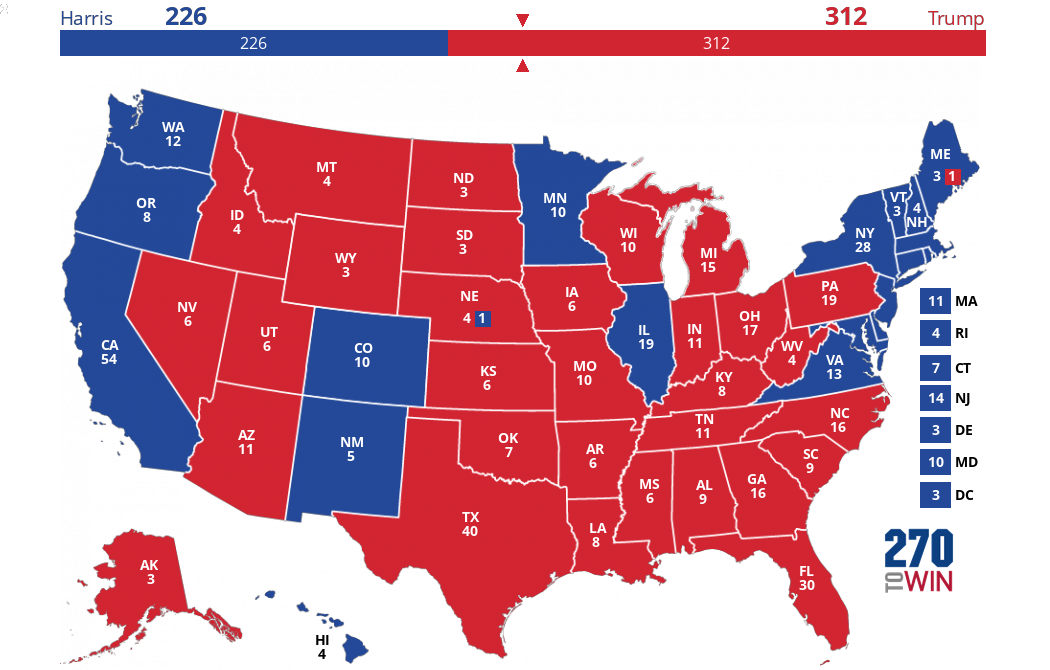The Electoral Map if Only Citizens Were Counted
By 270toWin Staff
March 29, 2018
Earlier this week, The Census Bureau announced that the 2020 census will include a question about citizenship. The decision led a number of states to sue the Trump administration. The New York Times summarized the controversy this way:
"The Constitution requires that every resident of the United States be counted in a decennial census, whether or not they are citizens. The results are used not just to redraw political boundaries from school boards to House seats, but to allocate hundreds of billions of dollars in federal grants and subsidies to where they are needed most. Census data provide the baseline for planning decisions made by corporations and governments alike.
Opponents of the added citizenship question said it was certain to depress response to the census from noncitizens and even legal immigrants. Critics accused the administration of adding the question to reduce the population count in the predominantly Democratic areas where more immigrants reside, in advance of state and national redistricting in 2021."
We got to wondering how today's electoral map might be different if non-citizens were undercounted. As it turns out, we looked at this last year after Iowa Rep. Steve King introduced a resolution for a constitutional amendment that would effectively base the electoral map only on the citizen population. Of course, excluding all non-citizens is a much larger change than not counting some of them, but it gives us some idea of where there could be an impact and the potential magnitude.
Here's how the electoral map would look, based on 2013 Census estimates, and using 2016 election results, if only citizens were counted. Click the image for an interactive version.
As we found at the time, "11 states would be impacted. The big loser would be California, which would see 4 of its 55 electoral votes trimmed away. No other state was impacted by more than one electoral vote. FL, NY and TX would lose one each, while seven states (LA, MO, MT, NC, OH, OK, VA) would gain one." In terms of the 2016 election, Donald Trump would have won an additional four electoral votes, giving him a 310-228 victory, vs. the actual 306-232 result.*
* Results comparison ignores faithless electors. Here's a 2016 actual map that includes those votes.


